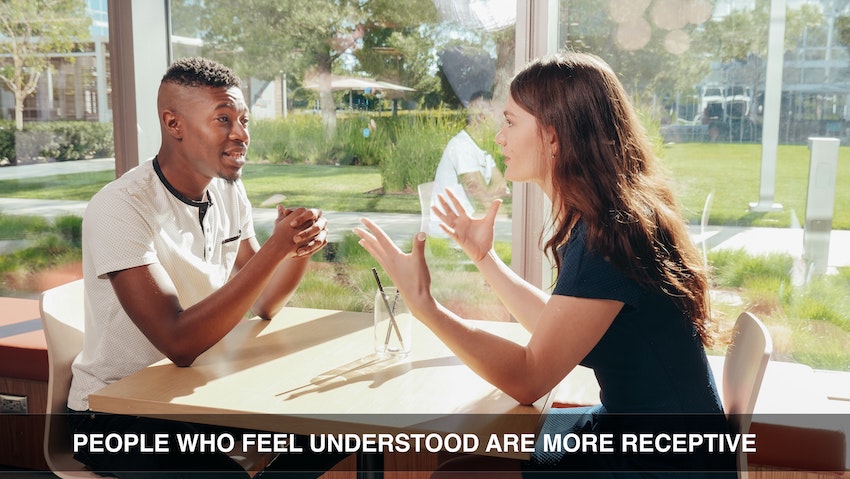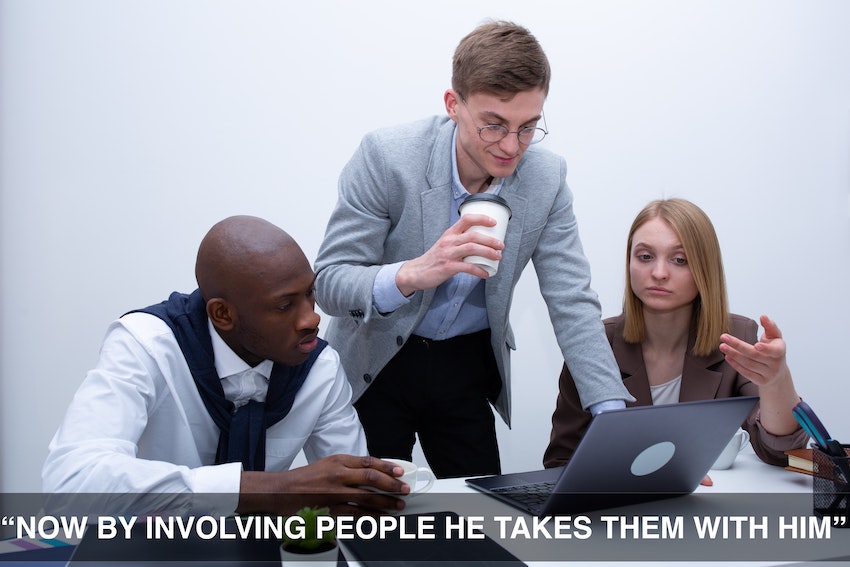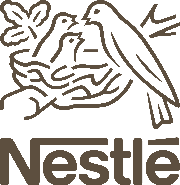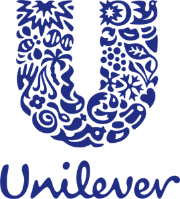Managing Meetings
Lead Meetings That Matter and Motivate
Refine your communication skills by learning to harness your emotional intelligence with one of the UK's most acclaimed management training courses.
Why Choose This Training Course?
More Than Just A Course Of Lectures
What gets in the way of developing and holding on to new communication skills are old habits of thinking and speaking. Even if the advice is very good the reason why it rarely sticks are the mental habits people inevitably revert to, especially under pressure.
Unlearning those old habits and internalising a more effective and lasting approach to communication needs more than a short course of lectures on how to do it.
What Makes This Training Stand Out?
What makes this coaching stand out is the exceptional support through one-to-one coaching sessions and continuous feedback. Changing behaviour is not an easy task as old habits are hard to break.
With a 40-year track record we can help you cultivate practical skills, and build your confidence to so you can successfully navigate real-world challenges, ensuring lasting behavioural improvements.
Testimonials
Join thousands of participants getting results
"What I love about this course is that I didn't just learn about the topic, this course is about ME. I'm confident I can reliably use my new skills, even when under pressure".
![]()
"A lesson for life! The power of effective communication is incredible when one masters the skills "listening with empathy" and "speaking assertively"
![]()
Clients We Have Worked With
Well-known companies who have used this course again and again, over many years
Course Summary
Training Objectives
Ever sat in a meeting feeling it could've been an email? Statistics show there are over 55 million meetings a day worldwide. This training course is designed to transform those yawning sessions into dynamic huddles that actually get stuff done. You’ll be able to make your meetings the highlight of your day!
- You’ll be able to plan meetings with a clear idea and purpose to save time and make them useful. Only invite people who will add value.
- You’ll learn to lead meetings with energy and encourage everyone to share ideas. This makes the team stronger.
- You’ll be able to put your foot down and keep track of what's said in meetings by assigning someone to take notes or use software.
- YOu’ll learn how to deal with any team problems kindly. Follow up on tasks so that meetings lead to action.
- You’ll practice using tools like agendas, time limits, and regular check-ins to keep your meeting focused and productive.
Develop Your Emotional Intelligence
You will learn a set of powerful emotional intelligence communication techniques so that you can manage difficult conversations, handle challenging situations, build relationships and set firm boundaries.
Transferable Skills
The goal of this training is to equip you with the tools they need to build strong, lasting relationships in your professional life, although because these skills are so transferable many clients report vast improvements in their personal relationships as well.
Develop Skills
This is a skills development rather than just a theoretical programme, so the emphasis throughout will be on you taking turn after turn, practising your skills, while receiving feedback and coaching about your effect on others.
Repeated Practice and Feedback
In your coaching sessions you will be helped to practise dealing with the kinds of situation you find challenging, again and again, until you are confident you can do it successfully.
Video Analysis
We'll combine practical, hands-on experience with video replay and analysis and discussion of the principles involved to help you gain both skills and understanding. Special attention is paid to your individual training needs, so you can practise your skills in real-life situations that you have to handle at work.
Sustained Change
That's why as well as your place in a small group, this training includes a generous amount of private and confidential one-to-one coaching sessions online, spread over several months, ensuring an exceptional level of support. This will ensure the changes you make are sustained over a longer period of time and any obstacles are overcome. Choose between online training available worldwide, or in-person face-to-face courses in the UK.
Course Dates and Price
For a list of upcoming course dates (for online coaching and face-to-face training), the locations of the next 3-day public courses in the UK and pricing Click here.
Free Initial Session
This initial coaching session serves as an introduction to the "Skills with People" course, allowing you to understand the course's relevance and effectiveness for your specific needs before committing to it.

Importance of Managing Successful Meetings
Managing meetings isn't just about ticking boxes - it transforms chatter into strategy and confusion into clarity. It's the cradle where productivity is nurtured and ideas bloom, ensuring every voice at the table weaves into a tapestry of collective success.
Effective communication Skills (empathy and assertiveness)
Good meetings need good talkers and even better listeners. When you manage a meeting, use empathy – this means really hearing what others say and caring about their feelings. Assertiveness is key too.
Speak up for what you believe but do it kindly. This mix helps everyone feel heard and important.
You should also watch people's faces and body language to understand more than just their words. This can make the team trust each other more and want to work together better. Now, let's get ready for the next step: planning your meeting well!
Increased productivity and efficiency
Managing meetings well makes everyone's work better and faster. Done right, a meeting can turn talk into tasks that get done. Good chats in the meeting room mean less confusion later.
This leads to great meetings and to more work completed in less time - everyone wins! Having fewer but better meetings frees up hours for thinking by yourself or getting other jobs done.
Say goodbye to unproductive gatherings where people just listen without talking much. By making every second count in a meeting, you make sure no one feels their time was wasted. McKinsey tells us planning with purpose and preparing properly can transform talks into action quick smart.
Keep it short, stick to the point and watch your team do great things together!
Building team cohesion
Boosting productivity paves the way for stronger team bonds. Good meetings help teammates work better together. They share goals and understand each other's roles. This makes a group united.
Getting people on the same page isn't just smart; it's key to making them feel connected and ready to tackle tasks as one. Mix up meeting habits, talk about common aims, and encourage teamwork.
Trust grows, and so does the quality of work they do together.

Planning and Preparing for a Meeting
Diving into the make-or-break stage of how many meetings go – planning and preparation, where a seamless blend of foresight and organisation sets the tone. It's about crafting that roadmap that'll guide your team from murky waters to crystal-clear outcomes. On this training course you’ll explore how you can master this pivotal prelude to any successful meeting.
Determine the need for a meeting
Before you even set a date for your next meeting, stop and think. Ask yourself if this meeting is really needed. Many times, things can be solved with a quick chat or email. A meeting should have a clear purpose.
Only plan one if it's the best way to talk about something important or make decisions together.
If you decide a meeting is necessary, make sure it has solid objectives. This means everyone knows the meeting's objective, why they're there and what they need to do afterwards. Clear goals help make meetings work well and stop them from being a waste of time where nothing gets done.
Use these steps to keep your meetings on track and full of good ideas.
Set clear objectives for a successful meeting
Once you've decided a meeting is needed, it's time to focus on the meeting's scope and what it should achieve. Clear objectives are the heart of an effective meeting. They guide everyone so that time spent together moves things forward.
Think about sensible process and the end result - what should happen after this get-together? Maybe you need to come up with a plan or make an important decision.
Writing down your goals for the talk helps everyone understand why they're there. These goals tell team members what needs to be done and help keep your discussion on track. Make sure these aims are easy to grasp and relevant to all who will join in.
This way, every person knows how their part fits into the bigger picture, working towards making your gathering successful and useful for all involved.
Invite only necessary meeting participants
Make sure to check the attendee list before sending out invites. Not everyone needs to be in the room where it happens. Think about what each person could bring to the table. Ask yourself, does this person have something important to add? If they don't, they might not need an invite.
Keeping meetings small makes them more useful for those who come. A clear agenda helps with this. It tells you who really should be there. We're talking about folks who will speak up, share ideas or make decisions on what's being talked about.
This way, time is well spent and everyone's happy because they had a role to play in making things happen!
Develop a clear agenda
Creating a good agenda is like making a map for your meeting. It shows everyone where you need to go and what stops you'll make along the way. You want your agenda to be easy to understand so that each person knows what will happen.
Think about the most important things you need to talk about and put them on your list first.
Share this roadmap with the people coming to your meeting before it starts. This way, they can get ready and know just what's expected of them. A well-planned list keeps you focused, saves time, and helps with getting great results from your discussions.

Managing Time Effectively
Managing Time Effectively: Time is that one resource we're all chasing, yet it slips through our fingers like sand. In the realm of meetings, mastering its flow can mean the difference between a snappy session brimming with productivity and a never-ending talkathon that's as draining as it is dull.
Stick to the agenda
Have an agenda and follow it. This keeps the meeting on track and makes sure you cover all the important stuff. If you set a plan, people know what to expect. They can prepare better, and this helps everyone stay focused.
Jumping around different topics wastes time.
Keep each topic short so that no one gets bored or lost. It's like a map for your meeting; stick to it! You'll get through your list without going off course. And if something new pops up, decide if it fits into another talk or needs its own time later on.
That way, meetings don't drag on longer than they should.
Set a time limit for each item
Give each important point on the agenda its own time slot. This keeps your meeting short and focused on talking points. It makes sure that you talk about all the important stuff without wasting time. Think of it like a timer for each topic.
When it goes off, move on to the next thing. If something needs more effort, plan another meeting time or have further discussion later.
Putting a clock on each item means everyone knows how much time they have to share ideas and ask questions. It helps make sure no one talks too long or goes off topic. After this, it's key to share out tasks so people know what they need to do after the meeting ends.
Delegate tasks and responsibilities
Give different people jobs to do in the meeting. This helps everyone feel important and gives you more time to focus on leading the meeting. Make sure each person knows what to do and by when.
Spread out tasks like taking notes, keeping track of time, and following up after the meeting. By sharing these jobs, your team member also can learn new skills and get things done faster.
When people have their own parts to play, meetings work better. They know they're not just there to listen but also to help with what's next. This makes your group stronger because everyone has a chance to show what they can do.
Now that you've set up a good way for people to encourage ideas and help each other in meetings, let's look at how inviting creative ideas from participants can make your meetings even better.

Encouraging Creativity
In the heart of every successful meeting lies a spark of creativity - it's where the magic happens, folks. Fostering an environment that embraces wild ideas and lively debate can turn a standard sit-down into an incubator for innovation; this isn't just about thinking outside the box but setting the box on fire.
Allow for brainstorming and open discussion
Brainstorming and open discussions are key to sparking new ideas. They help everyone look at problems in different ways. When you let people share their thoughts freely, you can find creative solutions that might not come up otherwise.
Remember to ask questions that don't have a simple yes or no answer. This way, you encourage everyone to think deeper and contribute more.
Make sure your meeting room is a safe space where all voices can be heard. Respect for each other's ideas is important – it makes people feel valued and willing to offer their thoughts.
Keep an open mind during these sessions; the best idea might come from the least expected place!
Embrace different perspectives
Good meetings get even better when everyone's ideas are heard. Think about it – different people see things in unique ways. When you invite folks to share their point of view, the team can come up with awesome solutions that one person alone might not think of.
It's like adding more colours to a painting; suddenly, everything pops and you have this amazing picture no one expected.
Let's say someone from marketing has a fresh take on an issue the tech team is stuck on. By listening and mixing those different thoughts together, your meeting could spark new ideas that really push the project forward.
If your meeting space feels safe for all kinds of talk – serious or wild – who knows what great plans can come out? The key is open ears and an open mind; then watch creativity soar!

Selecting and inviting the Right Participants
Navigating the murky waters of meeting invites can be akin to planning a strategic battle - every soldier must have a purpose. It's not just about filling seats; it’s about rallying your best brains, those pivotal players whose insights will turn the tide from mundane to monumental.
Choose individuals with relevant expertise and contributions
Pick people for your meeting who know a lot about the topic and can add good ideas. These are the folks who can keep things interesting and help everyone stay focused. They bring valuable knowledge to talk about different parts of the meeting's agenda.
This way, meetings become more than just time together; they turn into sessions where real work gets done.
You want a team in the conference room that's ready to dive deep into each agenda item. So, make sure you check over your guest list well. Only invite those attendees whose input will shine and help decide what comes next after the meeting ends.
By doing this, every minute spent in a meeting is useful, making for not just successful meetings but smart gatherings too!
Avoid inviting unnecessary or uninterested members
Just as choosing the right people with the needed skills is vital, keeping out those who don't need to be there is equally important. It's a common mistake to invite others just because it seems polite or because they're always included.
But think about this – if they have nothing to add, why waste their time? Meetings are for getting things done, not for filling seats. Being picky with your invites means you value everyone's time and contribution.
If someone doesn't have a clear role or interest in the agenda items, they'll likely tune out or even disrupt the flow of ideas in bad meeting. Consider if their presence will actually help in reaching meeting objectives.
By being thoughtful about who attends, you'll keep meetings focused and full of energy which helps lead to successful outcomes faster.

Encouraging Passion and Engagement
Igniting a fire in the belly of your team can transform the mundane into the extraordinary; it's all about fostering an environment where passion is not just welcomed, but actively nurtured.
Lead with zeal, invite vibrant dialogue, and watch as engagement levels soar - because when you're passionate about what you do, others can't help but follow suit.
Lead by example and show enthusiasm
Be the spark that lights up the room. Get excited about your meeting's goals and watch as others catch the flame. Your passion can move mountains, or at least inspire brilliant ideas during discussions.
If you're keen and show it, team members will likely follow suit.
Keep your energy high and genuine. When you care deeply about your work, it shines through in everything you do—even in how you manage meetings. Such commitment encourages everyone involved to bring their A-game too.
They'll come prepared, eager to contribute, ready for action plans and next steps.
Allow for open communication and feedback
Open communication makes meetings work. It lets everyone own their ideas and share them. This way, your team can build on what others say to create new, exciting plans. Make sure each person feels they can talk and give feedback.
This helps the other meeting participants stay lively and full of fresh thoughts.
Everyone's voice counts in a good meeting. Listen to different views and you might find brilliant ideas from where you least expect them. So always ask for feedback. That way, your team will trust each other more and work together better.

Documenting Meetings
Ah, the art of documenting meetings—truly a linchpin in keeping our collective marbles intact. It's about harnessing the chaos of discussion and decisions into something tangible; think scribing magic or digital wizardry that maps out what we’re all meant to be doing next.
Assign a notetaker or use a meeting management platform
Picking someone to take notes is key for good meeting management. They catch the important stuff like what tasks people need to do and any big decisions. Or, you might want to use special software that makes agendas and keeps meetings on track.
This tech can share what happened with everyone after the meet-up.
This person or program follows the agenda as a guide for their notes. They write down who has to do what by when, helping keep things clear. Then, they send out these notes so all know what's going on.
It's about adding order and making sure nothing gets lost in the shuffle.
Summarise key points and action items
Keep track of what happens in your meetings. Use templates and write down the main things people talk about. Also, list what needs to be done next and who should do it. This makes sure everyone knows their tasks and helps the team work better.
Make sure you get all the important bits from each part of the meeting written down. This includes any choices made or jobs given out. Your meeting notes will help you see how your project is moving forward, make good decisions, and make sure jobs are done right.

Ensuring Team Satisfaction
Squaring away the satisfaction of your effective meeting management and team isn't just a nice-to-have; it's a must-do. It hinges on addressing any quibbles and questions with genuine understanding, while also making sure everyone sees how their cogs turn the big wheel—keeping them clued in post-meeting is key to maintaining that collective drive.
Address any concerns or conflicts with empathy
Being a leader means you get when people feel upset or disagree. It's your job to listen and understand what's bugging them. This isn't just being nice – it helps everyone do better work together.
When there's a problem in the team, tackle it with kindness. Talk about the thing that went wrong, not who messed up.
Training can make you ace at fixing team troubles without making anyone feel bad. Show everyone you value their feelings, and they'll trust you more. Plus, they'll be more keen to share ideas and work as pals, not just coworkers.
That’s how great bosses turn problems into chances to get even stronger as a team.
Follow up on action items and progress
After addressing any issues with understanding and care, it's key to keep an eye on action items. Make sure everyone knows what they need to do next steps. Send out notes from the meeting that list out all the tasks and who is in charge of them.
This keeps things clear and helps make sure work gets done.
Having regular check-ins can push your team forward. Use tools like Fellow to track tasks so nothing slips through the cracks. These steps help move projects along quickly, making your meetings more than just tal - they turn into real action!

Conclusion
So, managing meetings is key. Done right, they can make a team work better together. Keep meetings on track and full of life to get the best from everyone. Remember to note down what happens in short meetings and follow up after.
Good time management that turns time into productive progress for all.

FAQs
What makes a meeting successful?
A meeting is successful when it has clear objectives, the right people attend, and ends with follow-up tasks that everyone understands - ensuring maximum satisfaction and productivity, meaning it's time well spent. To achieve this, it's important to have a clear agenda, encourage participation, and provide a fair summary.
How can we have effective meetings that don't waste time?
To have effective meetings that don't waste time, keep your meetings short, stay on topic, and encourage all to share ideas; this way you avoid bad meetings that feel like they're stealing your week. Ensure a clear purpose and agenda items are set to make good and effective meetings. Also, actively manage meeting time and make use of a clear action plan.
Is having lots of meetings a good thing?
Not always... If you find yourself in unproductive meetings or recurring meetings without any outcome—it could be one of the worst things for wasting time! Consider how many meetings are truly necessary for your team's success and prioritize important points.
Can stand up meetings actually help us manage better?
Yes! Stand up meetings tend to be quicker—leaving time for action rather than just talk. They promote a clear objective and a sensible process, making them a win-win for time management and productivity. Stand up meetings encourage participation and discourage off-topic discussions.
What should I do if only one member talks during a meeting and others are passively attending?
Encourage participation by asking direct questions – nudge everyone gently into joining the group discussion! This way, you can foster creativity and encourage ideas from all team members. Ensure that the team members are not just passive attendees but active participants.
Are there tips for managing remote team meetings?
For sure – plan ahead so decision-makers aren’t caught at odd times, make use of video calls to connect better and always leave room for further discussion later. Managing remote team meetings effectively involves clear objectives, a clear agenda, and to ensure maximum satisfaction for all participants, even when working remotely.






















